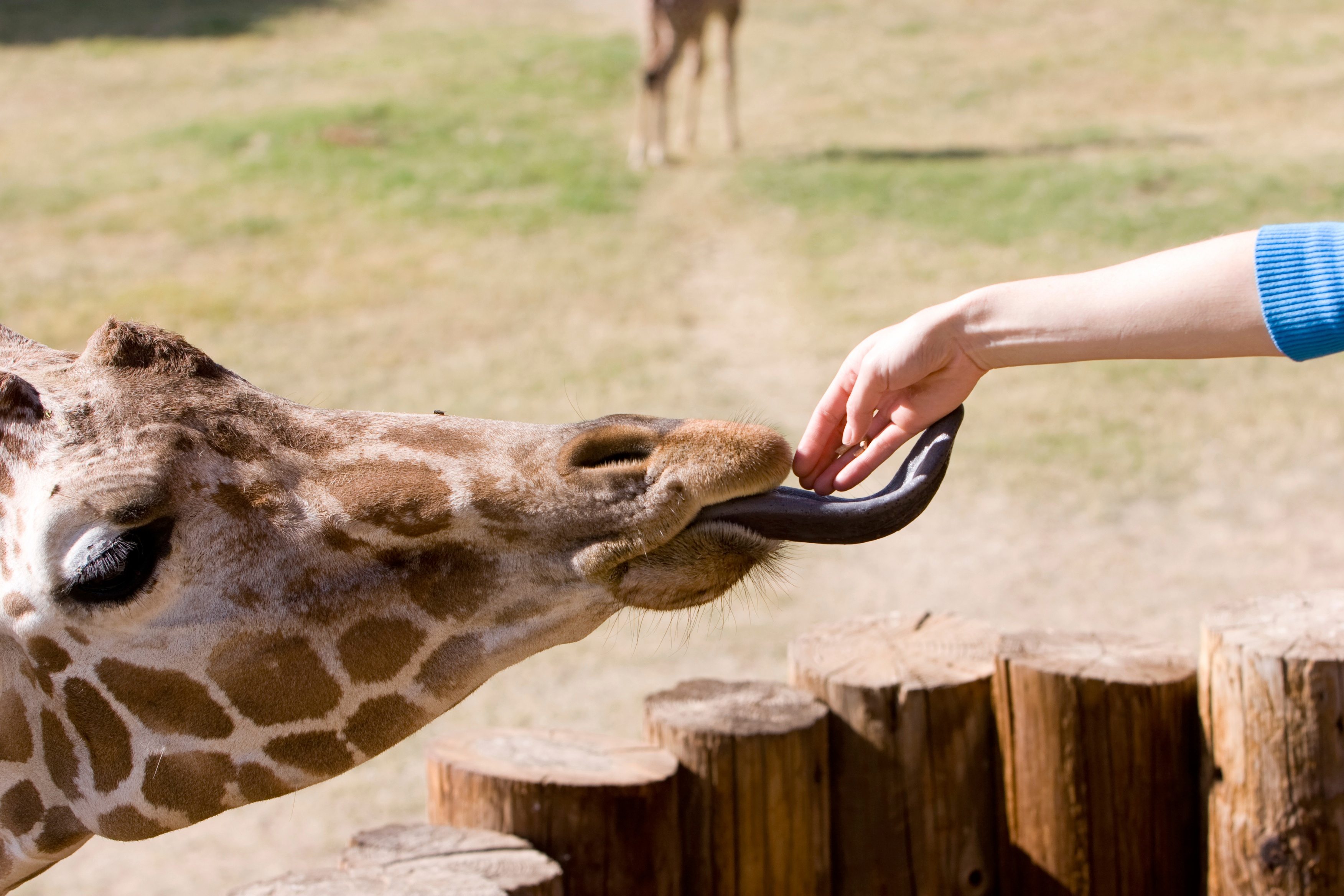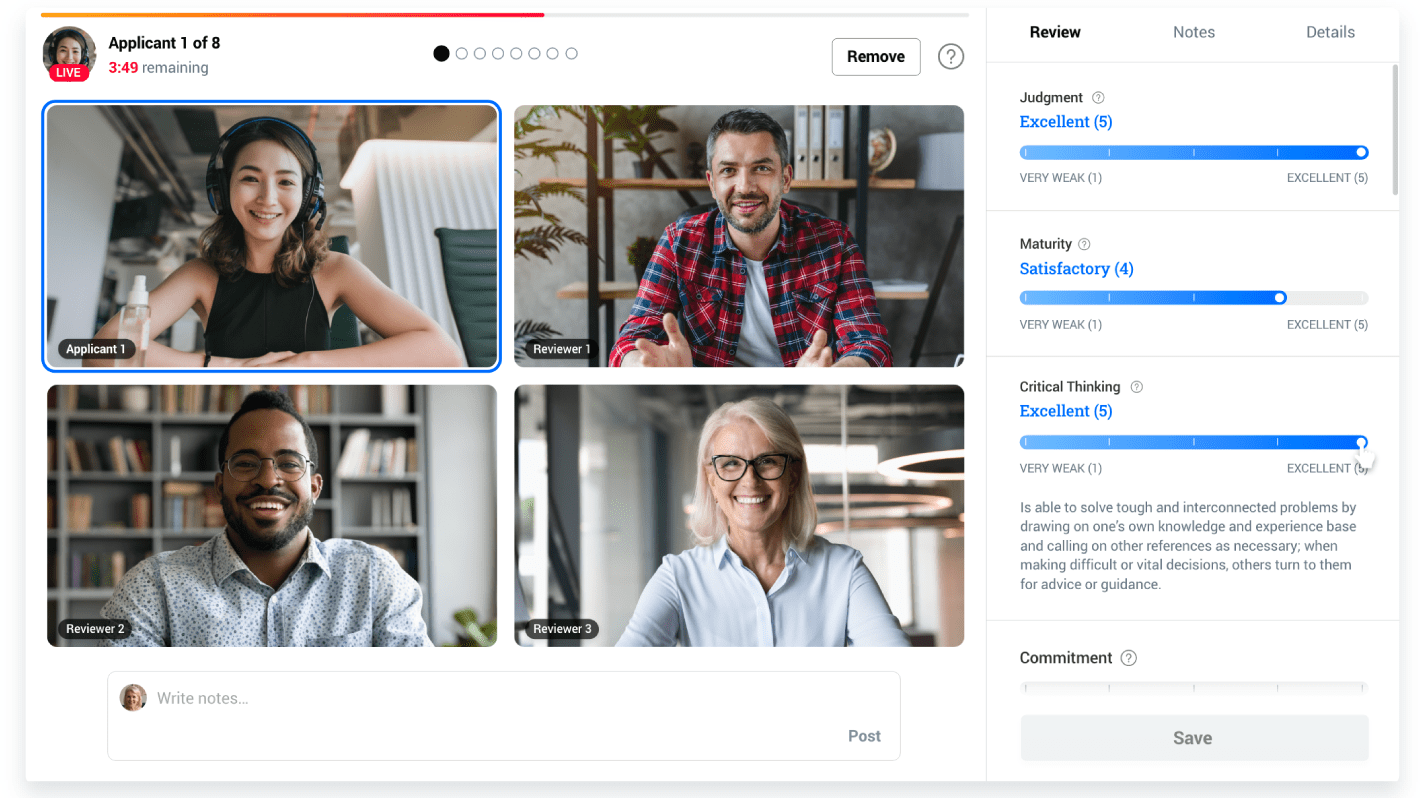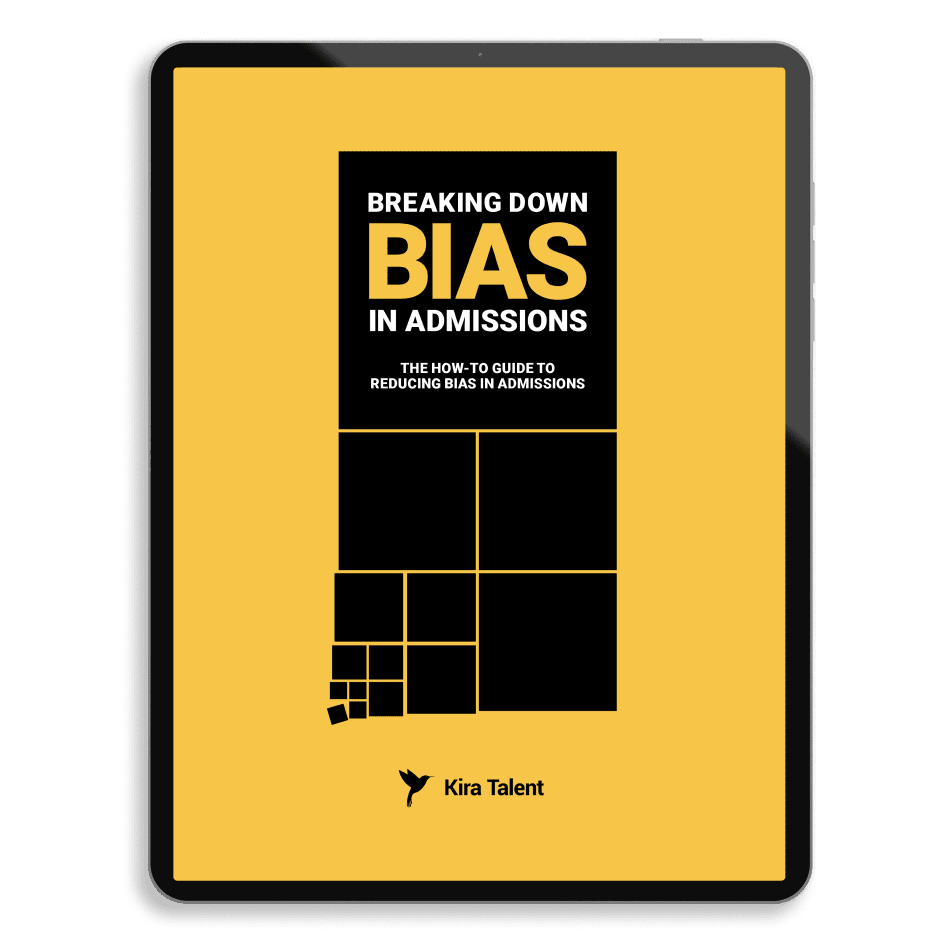Bias. No one wants to think about it. No one wants to talk about it.
And if you ask most Admissions Deans: No one on their team has any in their admissions process.
For admissions departments, bias is the elephant in the room. All schools want to believe they’ve structured a team committed to fair evaluation and diversity in the classroom, but unfortunately, bias persists.
A massive barrier to bias reduction is the simple fact that schools everywhere deny bias exists on their teams. However, the reality is that most of us do not understand what bias in higher education admissions actually means.
When we think of bias in admissions, it commonly translates to “racism, sexism, ageism” and other stereotypes. However, stereotype biases are only one in a long list of cognitive and behavioral biases that can impact how a professional reviews an applicant in an admissions evaluation.
Every admissions team I’ve worked on or with seems to fall somewhere on that spectrum, and regardless of their process, each have their unique obstacles to navigate when it comes to mitigating bias. That’s why I think that teams being aware of the different biases that can occur and how they can be mitigated within their specific admissions process is the first step to invoking real change.
Is my admissions process biased?
Take our quick assessment to diagnose the potential areas in which bias can occur in your admissions process. Your assessment will remain completely anonymous.
Since 2016, more than 400 admissions teams have used the Bias Assessment Tool to get a quick evaluation of their team’s admissions process.
We learned that although 97 percent of schools agree on the importance of fair admissions, less than half (47 percent) believe bias could be a factor in their own admissions process.
What surprises people is that process – and not just people – can lead to biased decision-making.
Cognitive bias is a characteristic deviation from rational judgment causing a person to make assumptions or inferences about others and situations
Some of the greatest harms affecting admissions teams form situationally out of how the applicant is reviewed. Biased decisions are often a result of holes in your admissions process that you may never have even considered.
Want to save this information for a later date? Download our eBook.
How does bias form?
No matter how you slice it, an admissions process cannot be wholly objective.
And as, many would argue, why should it be? Using learned experiences to identify the best and brightest is the job of tens of thousands of university admissions staffers around the world, who set out each day to find, recruit, and admit tomorrow’s leaders.
In this article, you'll learn the most common, influential forms of bias, how these biases present themselves in the decision process, and ways to reduce bias on your team to build an equal-opportunity admissions process.
Here are the two common root causes of bias in admissions:
Lack of consistency in the process
For example:
- Reviewer criteria - someone reads the rubric differently from someone else, and evaluates a candidate differently. “Exhibits strong leadership” could mean something totally different to two different people. In many cases, there isn’t even a documented rubric, meaning reviewers are saying ‘yes’ or ‘no’ based on their gut and reviewing experience.
- Number of reviewers - one applicant is interviewed by four reviewers, while another is reviewed by just one. In situation one, there will be discussion and commentary from the group of four, and in the alternative, only one reviewer’s opinion to decide the applicant’s fate.
- Method of review - a student comes in for a half an hour interview vs. a phone interview with a poor connection, or a student is given 15 minutes while another is given 30 minutes.
Inherent cognitive biases of the people
For example:
- Individual bias of a specific reviewer (i.e., one reviewer favors female applicants over male applicants, when a reviewer ignores negative qualities because of one positive quality)
- When a group of reviewers compromise or fold easily to one opinion to avoid conflict (groupthink bias)
- When a reviewer opts to follow the evaluation of another reviewer rather than going with one’s own evaluation (information cascade)
An applicant’s future rests in the hands of their reviewers. Without proper accommodation and understanding of reviewer bias, an applicant's dreams can be crushed without the reviewer even realizing his or her impact.
When admissions reviewers are biased, they almost never realize it. Bias is human.
All of us biased in one way or another, usually a result of what we were taught growing up and our personal experiences and beliefs.
Proactive admissions teams have an opportunity to understand their biases and to build in safeguards to protect their applicants through the admissions process. After talking with hundreds of admissions teams about their challenges, we’ve identified a number of biases that appear within typical applicant review cycles.
The Most Common Forms of Bias in Higher Education Admissions
Groupthink (The Bandwagon Effect)
When reviewing applicants in a group setting, groupthink, or the bandwagon effect, can be an extremely influential bias on a school’s decision. Groupthink occurs when, in the interest of consensus, members of a group set aside their own opinions, beliefs, or ideas to achieve harmony.

Think about it, when discussing a candidate’s potential in a small group, how often does one member of the team align with the others to achieve consensus? How often do you opt-out of raising an opposing viewpoint to keep things moving on a busy day?
Read: How to Curb Groupthink Bias in the Admissions Office
Halo Effect
The halo effect is particularly present in admissions, because it’s so easy for one excellent quality to deflect other flaws in an application. One very high test score, a compelling experience, or strong reference can make the applicant appear more positively through the rest of their application or interview.
We see this happen all the time with applicants who have one remarkable quality, which creates a direct contrast to most school’s mission for “well-balanced” students.
Ingroup bias (Similarity-Attraction Hypothesis)
Ingroup bias occurs in admissions when a reviewer gives a candidate preference because they perceive the candidate to be within the same ‘group’ as them. On the more obvious front, this could fall in line with racial or gender bias, but often it manifests itself in different ways. For example, if a reviewer is a single mother and learns the applicant is a single mother too, or they were both were alumni of the same undergraduate university, or grew up in the same town... the list goes on.
Although it may not become obvious in the applicant file, a reviewer is likely to feel an imaginary relationship with an applicant based on their shared group, and might lean more positively toward the applicant because of it.
Stereotype Bias
Stereotypes are often the most obvious form of bias in admissions and they are often what you think of when you think of ‘bias’ as a whole. Stereotypes can have a dangerous impact on how we see the world, especially if we are responsible to review hundreds or even thousands of applicants.
From recent headlines about Asian students losing points in admissions at Ivy League schools to lawsuits from applicants who felt their religion negatively influenced a school’s decision, there are constant stories in the media about how biases against a particular group are affecting admissions outcomes.
When admissions reviewer are influenced by an existing stereotype, such as an applicant’s race, gender, age, academic experience, or political leanings, they may unknowingly make an assumption about the applicant they do not intend to. Stereotype biases are embedded psychologically and difficult to identify.
Diversity and bias training is often suggested as a solution for stereotype bias, and it’s a wonderful starting point, but larger, systemic change is needed to solve this problem long-term.
By bringing multiple, diverse perspectives to the table on admissions committees, your school can have the multiple perspectives needed to start combating stereotype biases in admissions.
Confirmation bias
Confirmation bias occurs when an individual seeks, interprets, selects, or remembers information in a way that confirms his or her own beliefs or ideas. In an admissions interview or essay setting, as you can imagine, confirmation bias can severely work in the favor of some applicants without them even realizing.
If a reviewer considers an applicant to be a shoe-in before an interview occurs, they’re already attuned to think that the applicant will do well. The reviewer will look for signs during the interview to confirm his or her hypothesis.
As humans, we want to be correct and our opinions to be validated. Perhaps, the reviewer is reading an applicant's credentials and assumes that because the applicant graduated from a certain undergrad program, or worked at a certain company, he or she will be a good admit.
The reviewer will then seek signs throughout the application that back up their theory that the applicant must be a good admit to the program.
Through the lens of confirmation bias, reviewers can develop an opinion early based on previous knowledge and only seek information that backs that idea up, endangering applicants who may be unable to make that initial strong first impression.
Conservatism (Belief Revision)
Despite what you may expect, conservatism bias has nothing to do with how you vote in the next election. This bias occurs in admissions when reviewers maintain a prior view without properly adjusting for new information.
Humans, as a whole, struggle to treat new information equally to what they already know. For example: an applicant’s video interview is below average, but you read a glowing employer reference afterwards. Even if both categories should be weighed equally in their file, you are likely to subconsciously weigh the video interview higher in your decision as it helped you establish your initial opinion of the applicant.
Bizarreness effect

Tomatoes are the state vegetable of New Jersey.
Giraffes have blue tongues.
Our memory remembers unusual facts more than it does mundane facts.
The statements above are both facts, but you’re more likely to remember the second one because it’s more bizarre. This situation reflects the bizarreness effect, a form of bias that can make a candidate stand out above others due to a unique experience or hobby.
When we asked schools for some interesting application stories, one school told us about an applicant who “sent in a photo of them conducting a military band in a chicken suit."
How can you forget a story like that?
When two candidates apply with essentially identical resumes and qualifications, but one has a more unique extracurricular record, that applicant will stand out.
Admissions reviewers might think “wow, what a unique experience to add to our classroom.”
The problem with this isn’t as obvious as you may think: In many cases, the bizarreness effect will favor applicants with higher income or, in general, more privileges.
Candidate A, Levon, was able to spend a summer in the rainforest, because he was financially stable enough to not work and had family support to pay for his flights and accommodations. Candidate B, Sheila, worked a “normal, boring” office internship in her hometown and paid off her student debt.
On paper, Candidate A is more interesting and memorable, but does that make him a better candidate?
Recency Bias

In our minds, when coming to a conclusion about events over a period of time, we assign more weight to events that happen recently than we do to events further back in time.
When reviewing several applicants back to back, you’re likely to have the most detailed memory of the 4 p.m. applicant over candidates you saw earlier in the day. In the time you spend with an individual candidate, you may remember the candidate explaining his work experience at 3 p.m., but when you’re looking back at the interview, you'll likely give that candidate’s awkward handshake at 4 p.m. more emphasis.
When meeting with a candidate, if a school has a solid rubric and a reviewer has the time and direction to take detailed notes, recency bias can generally be avoided, but this often isn’t the case.
As we all know, review season is hectic. Without a consistent, quality way to keep a record of a student’s interview details, recency bias can be unavoidable.
Status Quo Bias
Status quo bias isn’t easy to identify, but it affects admissions teams and universities as a whole. Status quo bias is an emotional attachment to the current state of being; it’s an aversion to change.
It occurs when we fear the possible risk of the unknown, the change, and discount the benefits because of this fear.
Researchers Kahneman and Tversky notably observed that people, generally, feel worse about negative consequences when they try something new, than they do about negative consequences if they kept things the same.
When it comes to admissions, this transfers to admissions teams favouring “traditional” review methods and seeking “traditional” examples of intelligence and ability in your candidates.
It can also manifest itself in a bias toward “traditional” students; students with a track record of academic success: going to school at the right places, with the right people, in the right cities, working at the right places.
You might think “this is the type of student who has been successful in the past,” so you will be less likely to take a risk on a student who has taken an alternative path to business school.
Making changes to reduce bias at your school
Reading about the ways you are subconsciously giving an advantage to some applicants over others is pretty bleak. But it doesn’t have to be. Download our eBook below to uncover solutions and strategies to prevent bias at your school.
This post was originally published in August 2016 and updated June 28, 2020.



